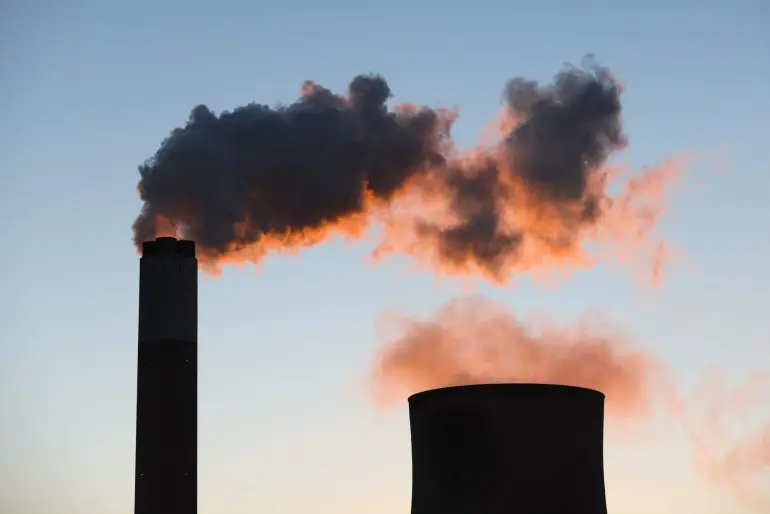In an age marked by ever-increasing energy demands, the quest to meet these needs has led to the construction of the largest power plants in the world. As the backbone of modern industry and global infrastructure, these plants are more than just engineering marvels. They are vital cogs in the machinery that powers our cities, factories, and daily lives.
The scale and cost of constructing and maintaining the world’s biggest power plants are staggering. These facilities, including hydroelectric dams, nuclear power stations, coal-fired, and natural gas plants, are awe-inspiring, covering vast areas and employing thousands of workers.
Tracing the origins of these large-scale power stations reveals a fascinating journey through history and technology. The evolution from small, localised power generation in the early nineteenth century to today’s behemoths mirrors the growth of global infrastructure itself. Each type of power plant – hydroelectric, nuclear, coal, or gas – has its own unique story, shaped by geographical, environmental, and technological factors.
There are a number of metrics that can be used to determine the largest power plant in the world including physical size, annual production measured in gigawatt-hours, or installed capacity, which is the maximum amount of energy that a power plant can potentially produce if conditions are ideal.
For this article, we’re using installed capacity in megawatts.
Kori Nuclear Power Plant

The Shin Kori No. 3 and 4 nuclear reactors (Credit: Bloomberg / Contributor via Getty Images)
Location: Busan, South Korea | Installed Capacity: 7,489 MW
Where nuclear energy is concerned, the Kori Nuclear Power Plant is the largest power station in the world by total reactor count and the number of operational reactors.
The plant is owned and operated by the Korean Electric Power Corporation and the first reactor became operational in 1978.
Kori-1, the first reactor, was shut down in 2017 and – after its spent fuel rods are removed – the decommissioning process is scheduled to take fifteen years at an astonishing cost of 720 billion South Korean won, or just over $640 million.
It’s worth noting that Japan’s Kashiwazaki-Kariwa Nuclear Power Plant has an installed capacity of 7,965 MW but it remains idle awaiting recertification while safety improvements are undertaken.
Gansu Wind Farm

Wind turbines in Gansu Province, China (Credit: CFOTO/Future Publishing via Getty Images)
Location: Gansu Province, China | Installed Capacity: 7,965 MW
Situated on the outskirts of the Gobi Desert in one of the most hostile and inaccessible locations on the planet, the Gansu Wind Farm, also known as the Jiuquan Wind Power Base, is the world’s largest wind farm and a contender for the largest power plant in the world.
Due to its remote location, the government built a 2,400 km-long transmission line to get the generated electricity to eastern and central China.
Jebel Ali Power & Desalination Plant

Vapor rises from cooling towers during sunrise. (Credit: Chris Ratcliffe/Bloomberg via Getty Images)
Location: Jebel Ali, United Arab Emirates | Installed Capacity: 9,547 MW
One of the world’s largest power plants, Jebel Ali is the biggest desalination plant on Earth and believed to be the largest gas-fired power plant in the world.
It extends for over 3,000 metres along the Persian Gulf coast, sandwiched between two of the planet’s biggest man-made islands, the Palm Jumeirah and Palm Jebel Ali. The plant can desalinate over 2.2 million m3, or 2.22 billion litres, of water every day.
Itaipu Dam

Itaipu Dam, Water flowing over spillway of dam. (Credit: Laurie Noble via Getty Images)
Location: Paraná River, Brazil/Paraguay | Installed Capacity: 14,000 MW
Straddling the border of Paraguay and Brazil, the Itaipu Dam – from the Guarani language meaning ‘sounding stone’ – was the largest power station in the world when it opened in 1984, until the Three Gorges Dam became fully operational in 2012.
Twenty, 940,000hp turbines generate 700 MW each and the power station provides Brazil with around 17% of its electricity and almost 80% of Paraguay’s electricity. The two nations are entitled to 50% of the generated electricity each, however Paraguay uses just a fraction of that amount so they sell their overflow direct to Brazilian power companies.
Baihetan Dam

Aerial view of the Baihetan hydropower station (Credit: VCG / Contributor via Getty Images)
Location: Jinsha River, China | Installed Capacity: 16,000 MW
The second biggest power plant in the world began commercial operations in December 2022. Constructed at a cost of over $30 billion, each of the sixteen turbines has an installed capacity of 1,000 MW.
It’s estimated that the Baihetan Dam will generate over 62 billion kilowatt-hours a year, saving more than 82 million tonnes of coal and reducing carbon emissions by around a quarter of a billion tonnes.
Three Gorges Dam

Hydro-electric Power Station at Three Gorges Dam, Hubei province, China. (Credit: Kim Steele via Getty Images)
Location: Hubei Province, China | Installed Capacity: 22,500 MW
The $32 billion Three Gorges Dam is one of the world’s most ambitious and complex engineering projects. Both the world’s largest hydroelectric power plant and the biggest power plant in the world, it’s also said to be the world’s biggest single source of electricity, believed to supply 2% of China’s entire demand for energy.
The project, which opened in 2004, used a staggering 27.2 million m3 of concrete and 486,000 tonnes of steel (the equivalent of over sixty Eiffel Towers). When it was first built, forty trillion kilograms of water built up behind the dam wall. This volume of water was so powerful it was said to have altered the Earth’s moment of inertia, slowing the rotation by six-hundred millionths of one second!
The World’s Biggest Power Plants

Coal-fired power station (Credit: Westend61 via Getty Images)
The biggest power station in the world and those that fall in behind are not just showcases of ingenuity and engineering prowess but also a reflection of growing energy demands and the challenges that come with it. These titanic structures symbolise the collective and relentless pursuit of progress and the complex interplay between technology, environment, and society.











